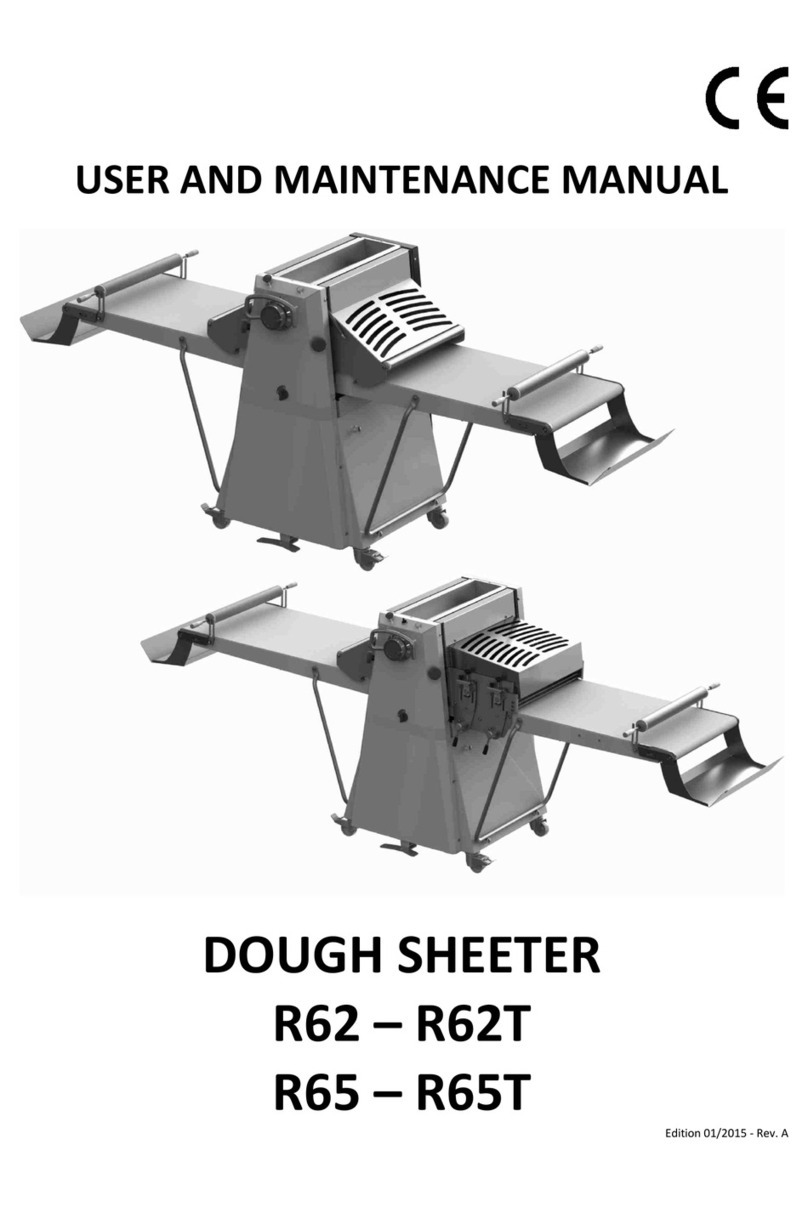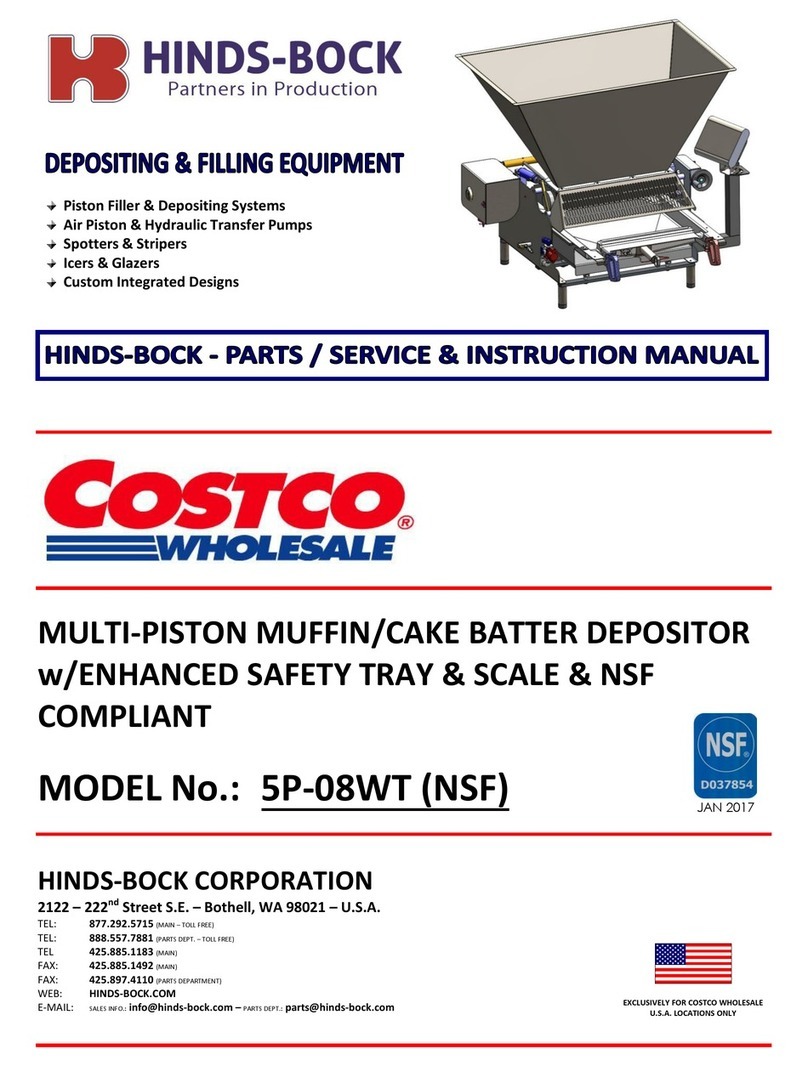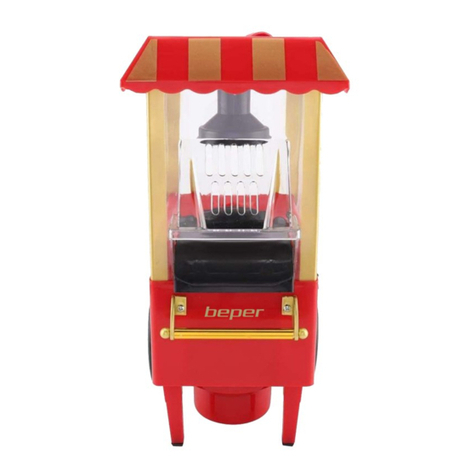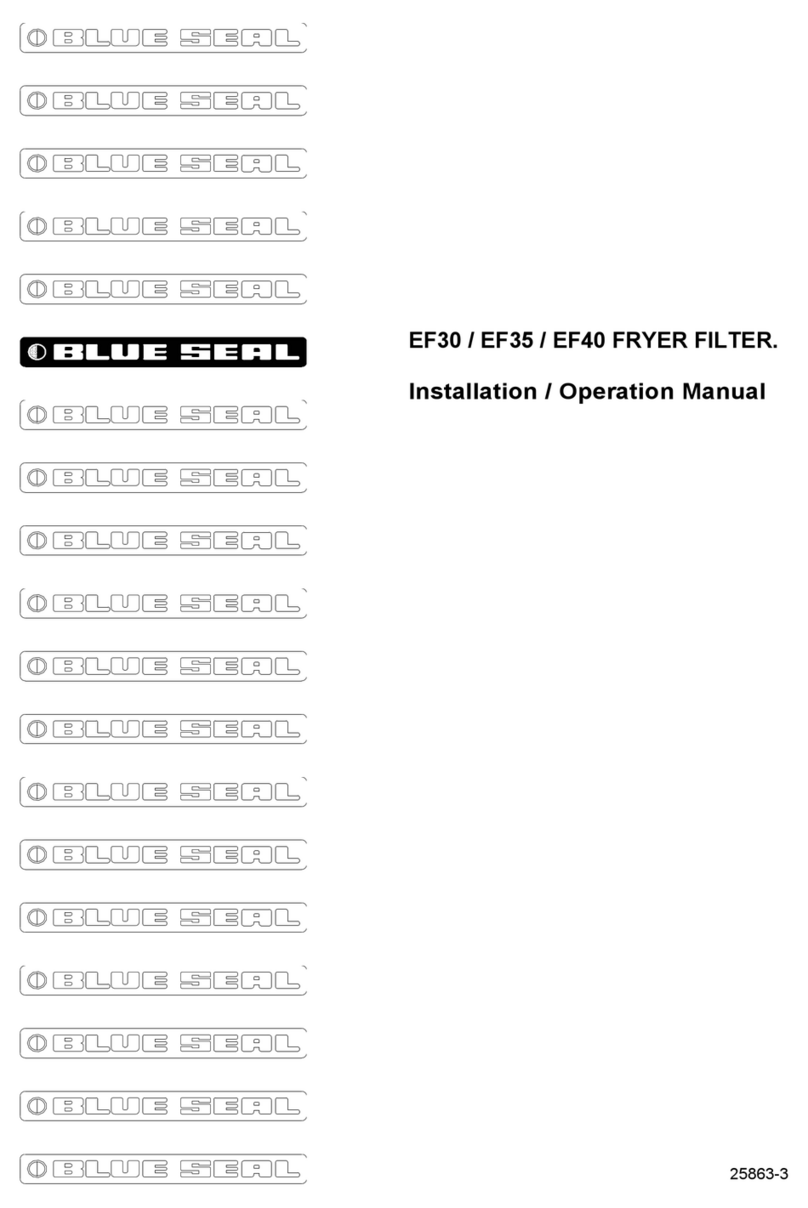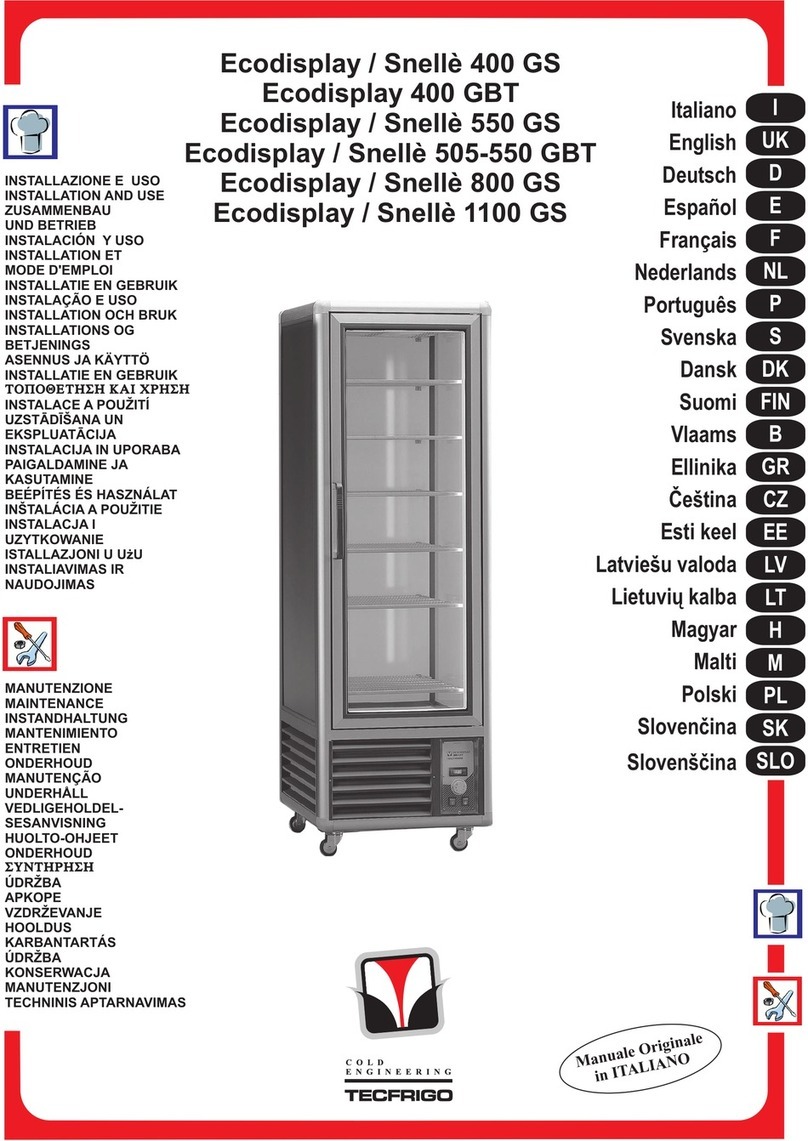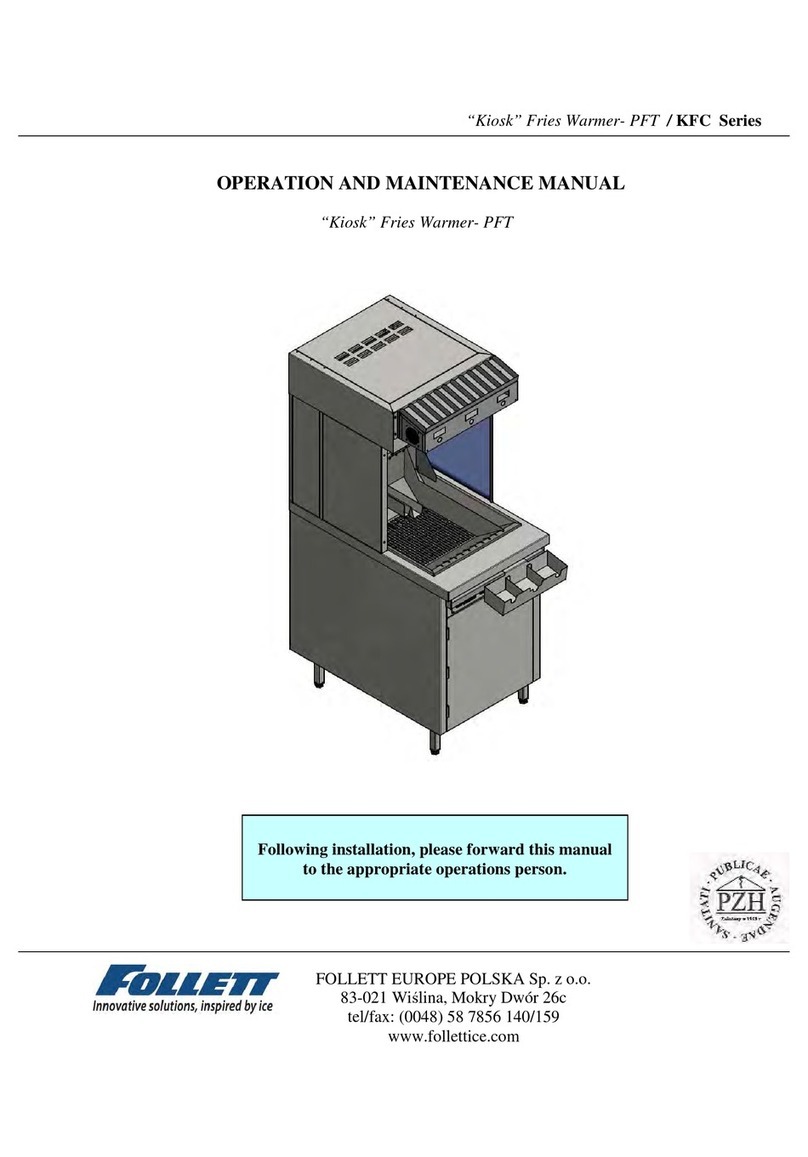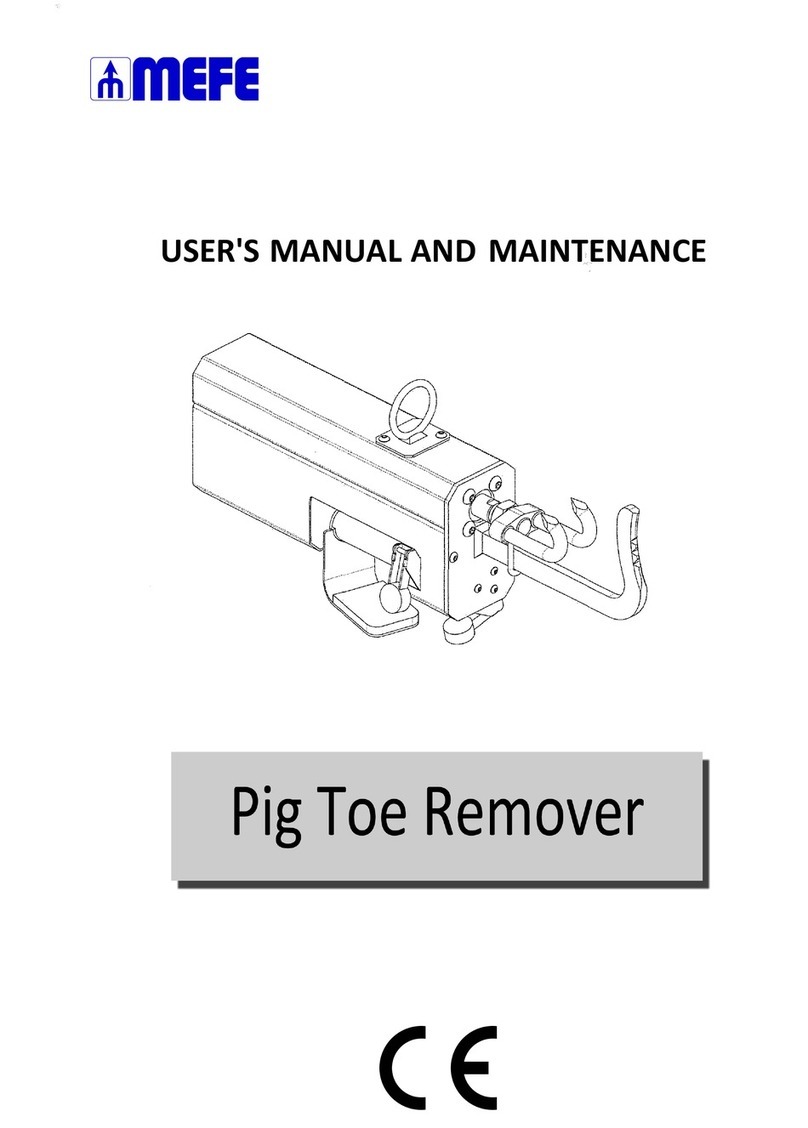Rollmatic R65AXP User manual

USER AND MAINTENANCE MANUAL
AUTOMATIC DOUGH SHEETER
R65AXP
Issue 11/2019 - Rev. A

2R65AXP - Rev. A
TABLE OF CONTENTS
1INTRODUCTION .................................................................................................................................. 3
1.1 FOREWORD.................................................................................................................................................3
1.2 GENERAL INSTRUCTIONS AND WARNINGS................................................................................................4
1.3 MAIN CASES FOR WHICH THE COMPANY DECLINES ANY RESPONSIBILITY................................................5
1.4 TERMINOLOGY............................................................................................................................................5
2MACHINE FEATURES ........................................................................................................................... 6
2.1 INTENDED USE AND DESCRIPTION.............................................................................................................6
2.2 TECHNICAL FEATURES ................................................................................................................................9
2.3 OVERALL DIMENSIONS .............................................................................................................................10
2.4 CONTROL AND ADJUSTMENT DEVICES ....................................................................................................11
2.5 IDENTIFICATION PLATE.............................................................................................................................11
3INSTALLATION AND USE.................................................................................................................... 12
3.1 WARNINGS ON INSTALLATION SITE .........................................................................................................12
3.2 INSTRUCTIONS FOR LIFTING, TRANSPORT AND POSITIONING OPERATIONS ..........................................12
3.3 ELECTRICAL CONNECTION........................................................................................................................13
3.4 OPERATION AND USE ...............................................................................................................................14
3.4.1 PRECAUTIONS AND PRELIMINARY CHECKS .....................................................................................14
3.4.2 GENERAL INFORMATION ON NORMAL OPERATION .......................................................................14
3.4.3 STARTING AND OPERATION.............................................................................................................14
3.4.4 OPERATING AND USING THE MACHINE...........................................................................................15
3.4.5 FLOUR COLLECTION DRAWER..........................................................................................................15
3.4.6 ASSEMBLING AND DISASSEMBLING THE WORK TABLES.................................................................15
3.4.7 CUTTING STATION............................................................................................................................17
3.4.8 FLOUR DUSTER.................................................................................................................................17
3.4.9 DOUGH REELER................................................................................................................................19
4MAINTENANCE ................................................................................................................................. 20
4.1 FOREWORD...............................................................................................................................................20
4.2 PERIODICAL MAINTENANCE (ordinary maintenance)..............................................................................20
4.3 BELT TENSION...........................................................................................................................................20
4.4 CHAIN TENSIONING (extraordinary maintenance)...................................................................................21
4.5 CHAIN REPLACEMENT (extraordinary maintenance)...............................................................................21
4.6 POSSIBLE FAILURES AND/OR FAULTS.......................................................................................................22
4.7 ELECTRICAL MAINTENANCE .....................................................................................................................23
4.8 CLEANING THE MACHINE .........................................................................................................................23
4.8.1 CLEANING THE PHOTOCELL .............................................................................................................23
4.8.2 CLEANING THE BELTS AND THE WORK TABLES ...............................................................................24
4.8.3 REPLACING THE BELTS .....................................................................................................................24
4.8.3 CLEANING THE SCRAPERS................................................................................................................25
4.10 LONG STOPS OR SERVICE DISCONTINUATION ..........................................................................................26
5SAFETY ............................................................................................................................................. 26
5.1 FOREWORD...............................................................................................................................................26
5.2 HAZARDS, SAFETY DEVICES AND RESIDUAL RISKS....................................................................................26
5.2.1 DANGERS AND CORRESPONDING RISKS THAT CHARACTERIZE THE MACHINE...............................26
5.2.2 SAFETY DEVICES AND REMARKS......................................................................................................27
5.2.3 CHECKING THE EFFICIENCY OF THE SAFETY EQUIPMENT................................................................28
5.2.4 RESIDUAL RISKS OF MECHANICAL ORIGIN.......................................................................................28
5.2.5 RESIDUAL RISKS OF ELECTRICAL ORIGIN..........................................................................................28
5.3 INFORMATION ON NOISE.........................................................................................................................29
5.4 SAFETY SIGNS............................................................................................................................................29
6DISMANTLING................................................................................................................................... 30

R65AXP - Rev. A 3
1INTRODUCTION
1.1 FOREWORD
This user and maintenance manual is to be consulted by anyone who may be appointed to,
charged with and authorized to use the machine; the term "use" refers to any phase of the
machine's working cycle (from assembly and transport to maintenance operation to dismantling). It
is also intended for the employer, the managers and any officer within the company where the
machine is used; they will have to read it thoroughly and understand it fully so as to use it to comply
with the applicable rules and regulations on health and safety in the workplace, established by the
laws and standards in force. The employer, at whose plants the machine is operating, as well as the
managers and any officer within the company, must provide any operators with suitable training and
information (all information must be simple and comprehensible, according to the foresight which
can be reasonably expected of the intended recipient) on its correct and safe use as well as on
general and specific risks in the workplace and/or inherent to the job itself. During the fulfilment of
such delicate tasks, this manual can be a valid support even if it cannot be considered exhaustive
since it is not strictly related to the machine itself.
The manual consists in a number of sections, each of which has its specific purpose, and in
particular:
2 Machine features
3 Installation and Use
4 Maintenance
5 Safety
6 Dismantling
The word machine will hereafter indicate the item to be used by the purchaser and for which this
manual is written and given to the purchaser, so that he may use it in a correct and safe manner.
Before carrying out any operation on the machine (transport, installation, connections to utilities,
adjustments, operation, repair work, part replacement, dismantling, etc.) as well as before allowing
anyone to use the machine, usually laymen, carefully read the general and specific instructions
contained in this manual and ensure that its purposes and meaning are clear, so as to acquire the
necessary knowledge to correctly operate and maintain the machine, as well as to understand and
become familiar with the safety devices it is provided with, and finally the residual risks it presents,
and therefore to use it in a correct and safe manner.
Keep this manual and any attached document in a safe place (drawings, diagrams, etc.).
Should the manual be lost or worn out immediately request a copy to the manufacturer clearly
stating the identification details of the machine (year of construction, model, serial number, etc.).
This manual reflects the state of the art at the time the machine is launched into the market and
cannot be considered unsuitable just because it has been subsequently updated following newly
acquired experience or new technical solutions.
The manufacturer is not responsible for the suitability of the place where the machine is used nor for
any complementary service, regardless of the fact that instructions on correct installation are given
herein. The company reserves the right to update machines and manuals, but is not obliged to
update machines and/or manuals previously manufactured/drawn up.
This manual is an integral part of the machine and must accompany it should it be transferred or
sold for whatever reason.

4R65AXP - Rev. A
ATTENTION! Before start-up and operation ensure that the machine is compliant with the
purchasing order and complete with all the devices described in this manual and in any
commercial documentation, especially any safety devices.
ATTENTION! The machine described in this manual is for producing sheets from bread, pastry and
pizza dough by making the dough go through calibrating cylinders that feature alternating
forward and backward movement. This machine cannot be used for any purposes other than
those described above.
The manufacturing company will not be held responsible for any damage to properties and/or injury
to people or animals due to an incorrect use of the machine.
1.2 GENERAL INSTRUCTIONS AND WARNINGS
The manufacturing company declines any responsibility for damages to people, animals or
properties caused by the failure to comply with the instructions contained in this manual and by the
failure to comply with the following indications:
Do not tamper with the guards and safety devices installed in the machine;
Do not tamper with the guards nor disable the safety devices installed in the machine;
Reposition all the protections and reset all the safety devices as soon as the reason why they
were removed/disabled is resolved;
Do not use the machine for purposes and/or with loads and/or in a way that does not correspond
to that indicated by the manufacturer
Only use bread, pastry and pizza dough
Carry out daily checks on safety devices, level and state of technical fluids, if present, as well as
checks on the general state of the machine
Carefully clean the machine on a daily basis
Adopt the necessary measures and precautions when carrying out adjustments, cleaning and
maintenance operations, etc. so that the machine or its components cannot be started by other
people, not even by accident
The location where the machine is to be installed must comply with European Directives as well
as with the laws and regulations in force in the country where the machine is installed and used
Respect any limit regarding climate conditions (see paragraph 2.2 TECHNICAL FEATURES) and
permitted use
The employer, at whose production sites the machine is installed, must guarantee that operators
are suitably informed and trained on their specific tasks, on safe and correct use of the machine
and on general and specific risks in the workplace and/or job-related; this manual can be a useful
support tool but cannot be considered exhaustive
Any manager who allows third parties to use the machine (for example the employer, and so
forth) must ensure that the machine is in good conditions, whole and fully functioning, especially
as regards safety equipment; should this not be the case, he must not allow it to be used and
must therefore put it out of service
During maintenance and cleaning operations (and any other such operation) operators must
wear snug clothes free of loose parts; they may not wear aprons, jackets, unbuttoned shirts, etc.
nor are they allowed to wear jewels (bracelets, necklaces, etc.) that may unhook or become
entangled in protruding parts; should they have long hair, they must use hairnets.
Should it be necessary to replace any parts, useoriginal spare parts only by ordering them from
the manufacturing company; should non-original spare parts be used, the manufacturing
company relieves itself of any and all responsibilities for any resulting damages to people,
properties and/or animals
Any arbitrary modification to the machine, relieves the manufacturer of any and all
responsibility for any resulting damages to people, animals and/or things

R65AXP - Rev. A 5
1.3 MAIN CASES FOR WHICH THE COMPANY DECLINES ANY RESPONSIBILITY
The manufacturing company declines any responsibility for damages to people, animals and
properties as well as for missed production due to:
Use of the machine not in compliance with the intended use or with products different from
those expressly declared in this manual
Installation not in compliance with the procedures illustrated in this manual
Use of the machine by inadequately informed and instructed personnel and, where foreseen,
inadequately trained on correct and safe use of the same
Maintenance, adjustments, settings, parts replacement, cleaning operations carried out by
inadequately informed and instructed personnel and, where foreseen, inadequately trained on
how to safely and correctly carrying out interventions
Use of a power supply that is different from, or not suitable according to, the specifications given
in this manual
Poor quality or a lack of maintenance, cleaning, inspection and other procedures specified in
this manual, will free the manufacturing company from any responsibility
Failure to comply or partial compliance with the instructions given in this manual
Arbitrary modifications to the original features and standard equipment of the machine, without
prior formal authorisation by the manufacturing company
Damages caused by tools, equipment, or other components both installed and not installed on
the machine, not supplied or in any case not foreseen or authorized by the manufacturing
company
Failure to comply with the laws and regulations in force in the country where the machine is to
be used
Exceptional events or force majeure not ascribable to the manufacturing company
1.4 TERMINOLOGY
To better understand this manual, we hereby illustrate some of the terms used herein:
MANUFACTURER, PRODUCER: Machine manufacturer.
CLIENT, BUYER: physical or juridical person who has bought a machine that is either new or in such
conditions to be considered as new (that is complete with these original instructions and with the
original copy of the EC Declaration of Conformity)
USER: whoever is legally responsible for machine use; in most cases the client and the buyer are the
same person.
OPERATOR: any person appointed to use the machine; the term "use" refers to any stage of the
standard machine life cycle.
MACHINE: the object for which this manual is written and given to the purchaser, so that he may use
it in a correct and safe manner.
MACHINE USE: all the operations that can be reasonably connected to the machine during its whole
life in relation to its intended use as stated in this manual.
DOUGH: preparation for bread, pastry and pizza, previously mixed using the appropriate mixer.
ORDINARY MAINTENANCE: any and all operations necessary to correctly operate and keep the
machine, which do not require any special training or professional expertise due to their basic nature
and can therefore be carried out by the operator.
EXTRAORDINARY MAINTENANCE: operations that are necessary to correctly operate and keep the
machine which, due to their complexity and/or hazardous nature, require the intervention of
specialized, expert and suitably trained personnel who possesses the necessary technical and
regulatory knowledge to carry out state-of-the-art interventions in safe conditions.
This manual suits for next models
1
Table of contents
Other Rollmatic Commercial Food Equipment manuals
Popular Commercial Food Equipment manuals by other brands
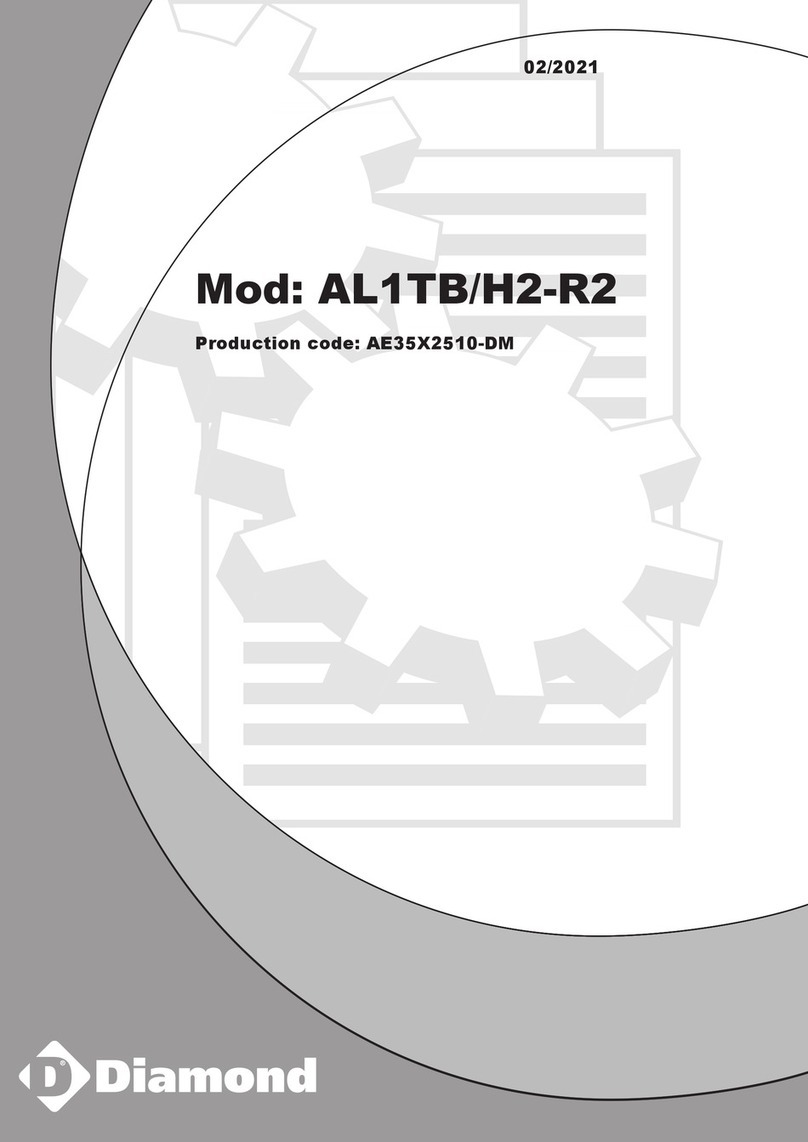
Diamond
Diamond AL1TB/H2-R2 Installation, Operating and Maintenance Instruction
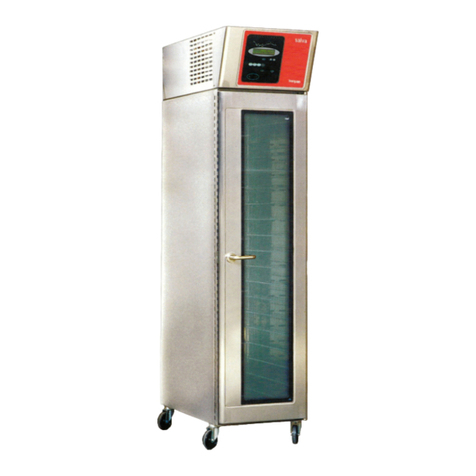
Salva
Salva IVERPAN FC-18 User instructions
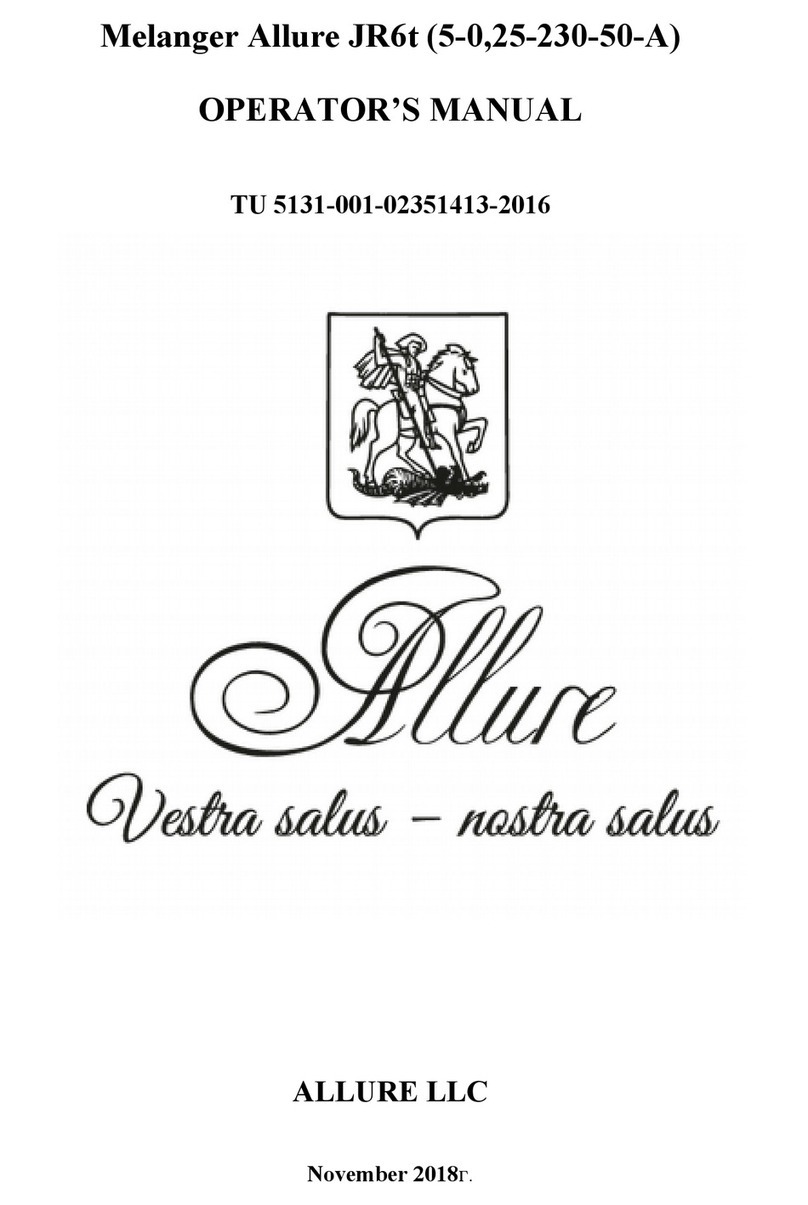
Allure
Allure Melanger JR6t Operator's manual
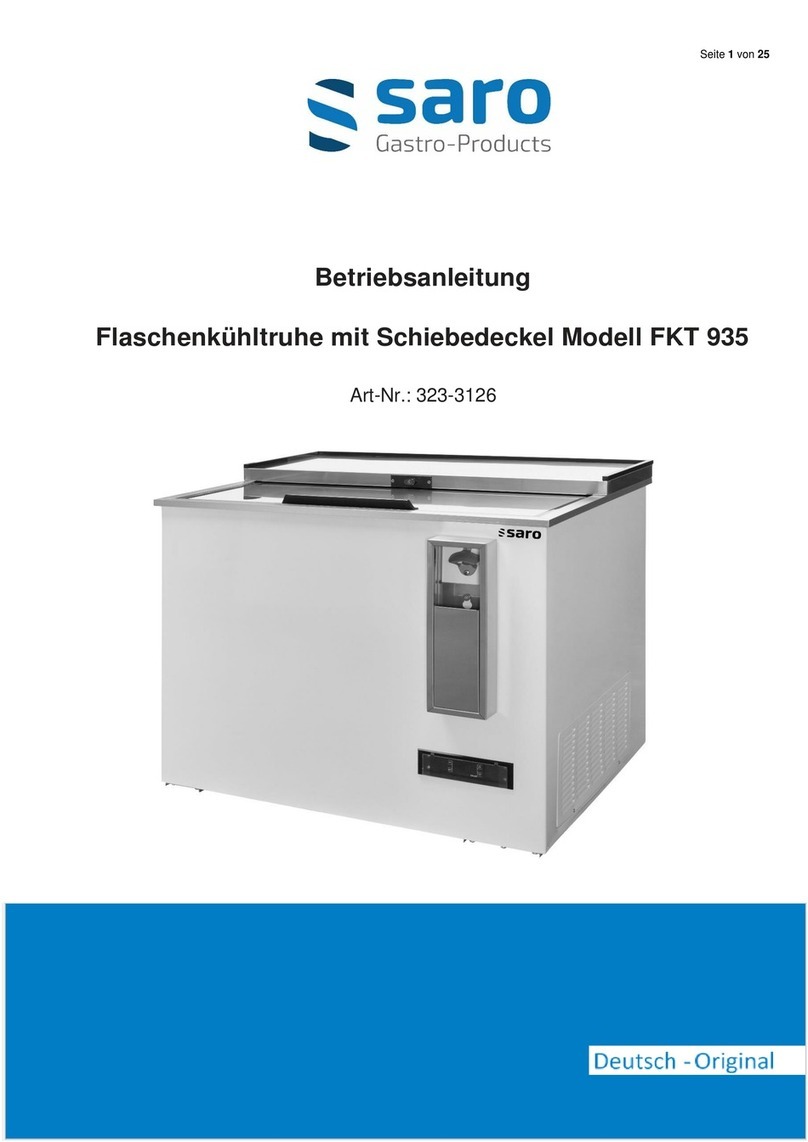
saro
saro FKT 935 operating instructions
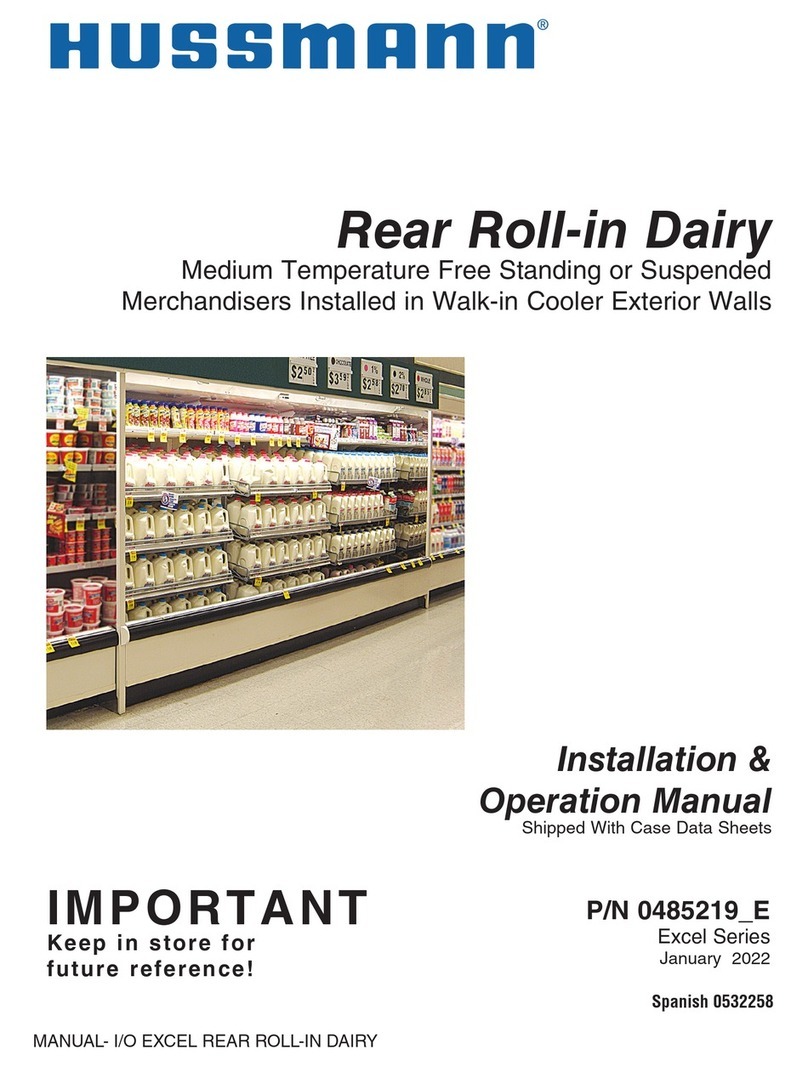
Hussmann
Hussmann Rear Roll-in Dairy Installation & operation manual
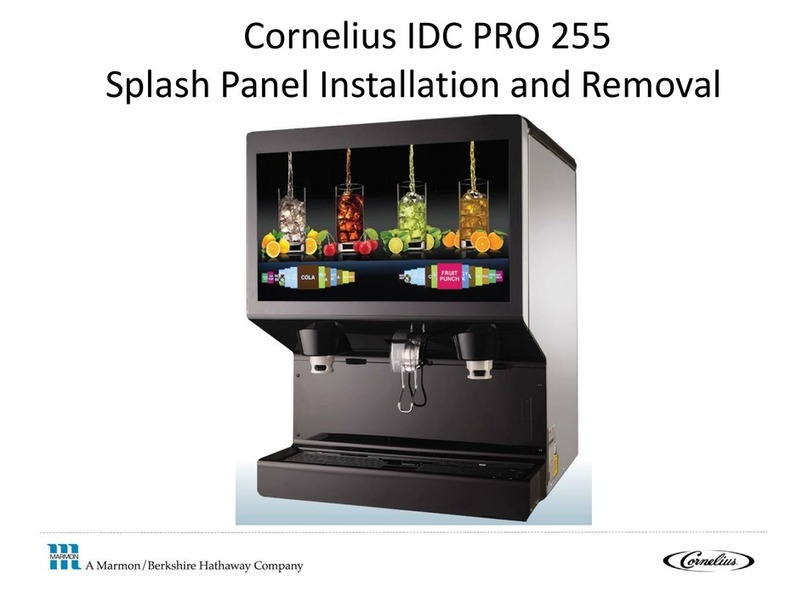
Cornelius
Cornelius IDC PRO 255 Service manual
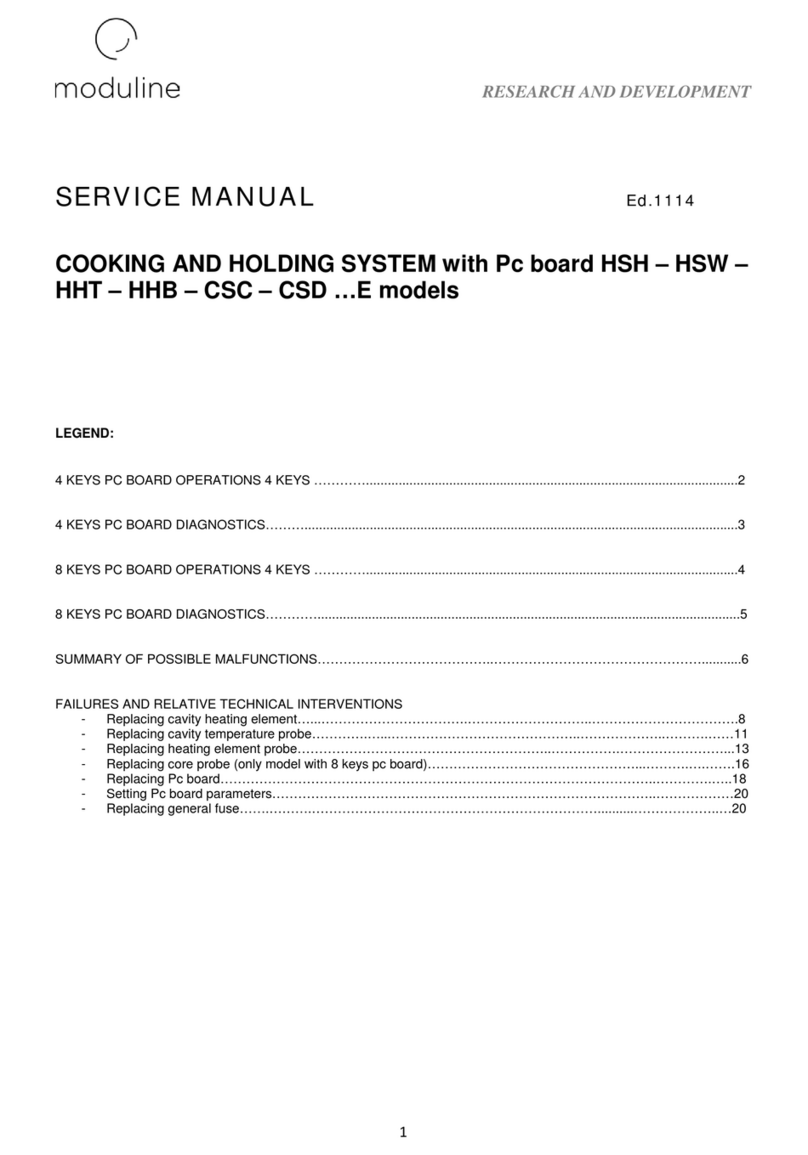
Moduline
Moduline HSH E Series Service manual
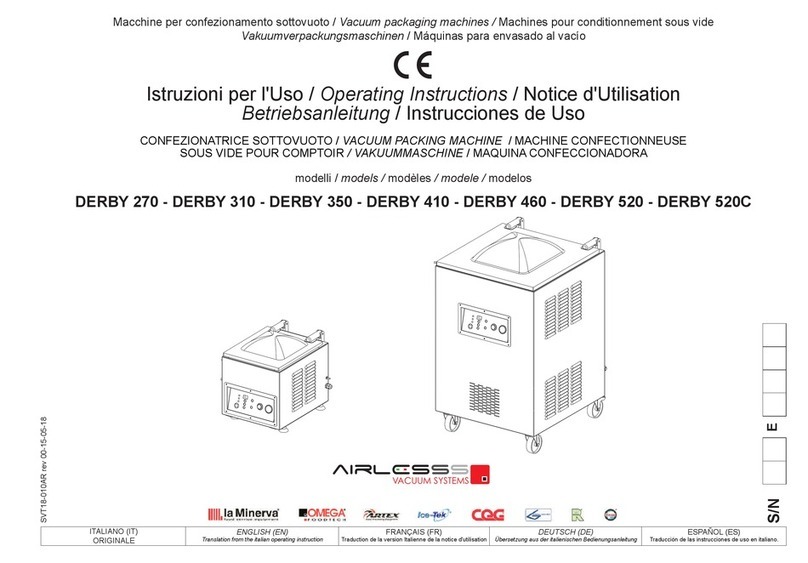
MINERVA OMEGA
MINERVA OMEGA DERBY 270 operating instructions
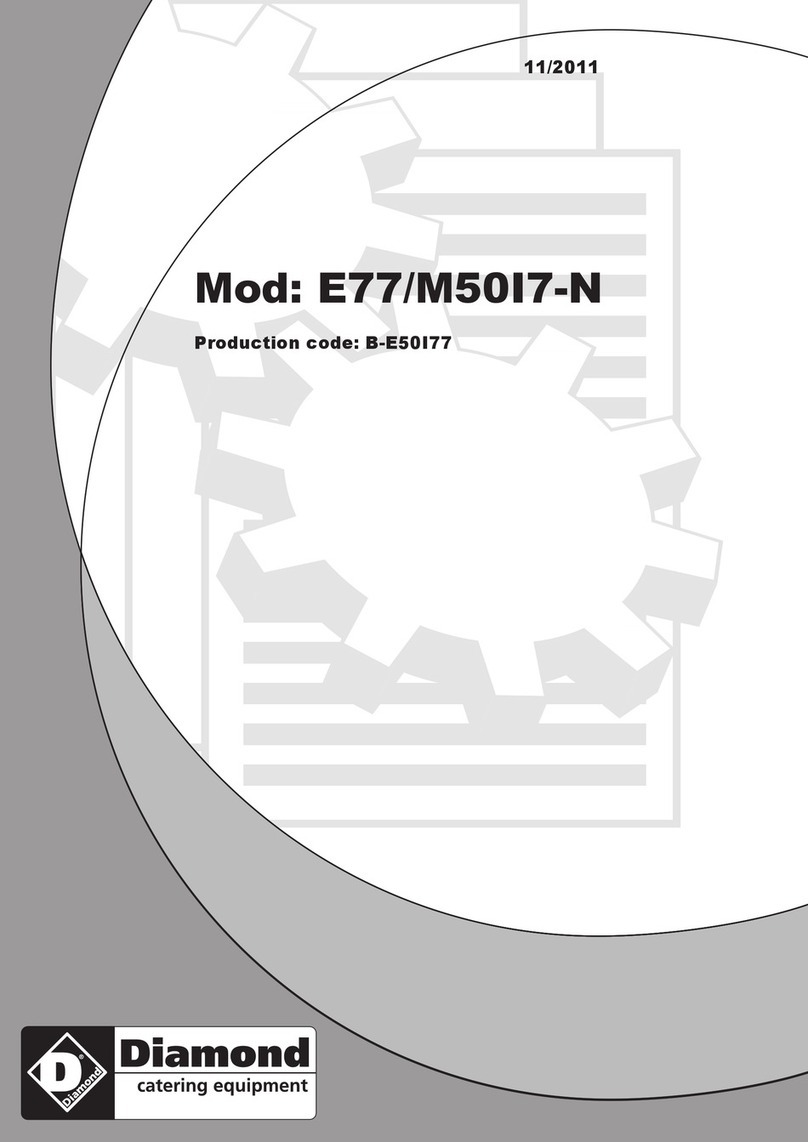
Diamond
Diamond OPTIMA 700 Installation, use and maintenance instructions
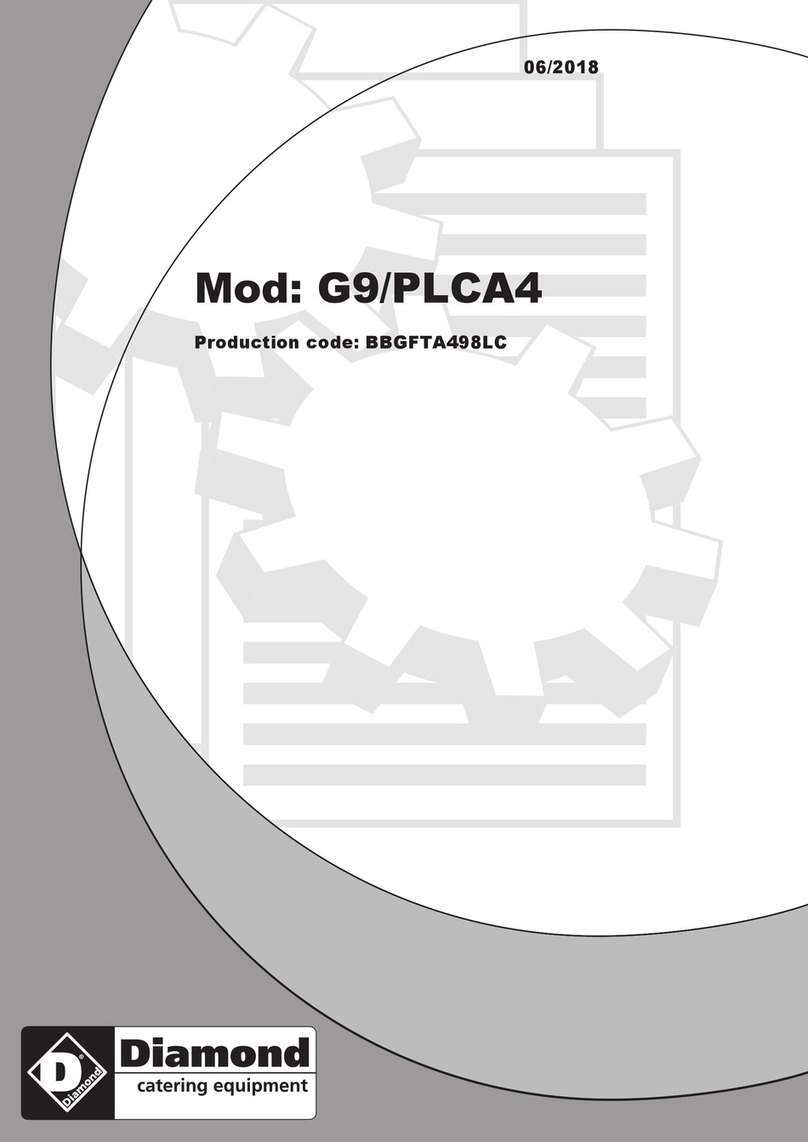
Diamond
Diamond G9/PLCA4 operating instructions
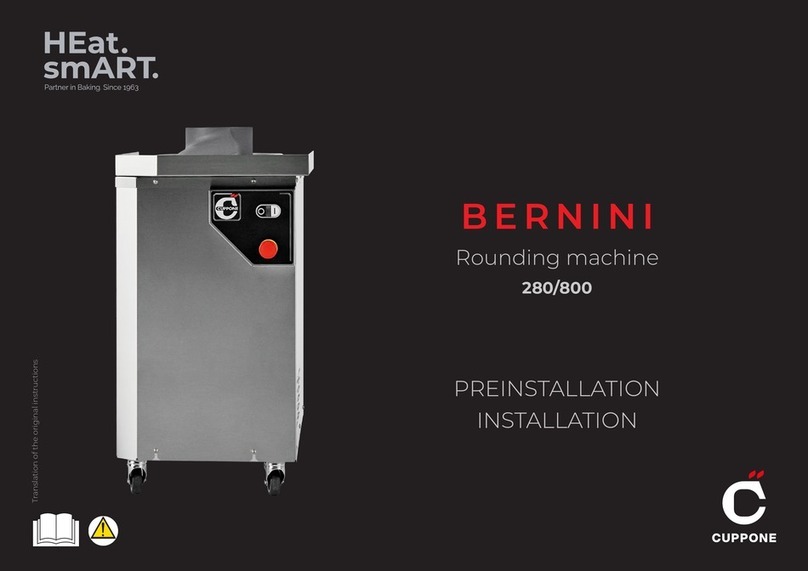
Cuppone
Cuppone BERNINI BRN 280 Installation

Arneg
Arneg Atlanta Direction for Installation and Use
